The diagram Fig.12 shown a piece of pure semiconductor S in series with a variable resistor R, and a source of constant voltage V. Would you increase or decrease the value of R to keep the reading of ammeter constant, when semi-conductor S is heated? Give reason.
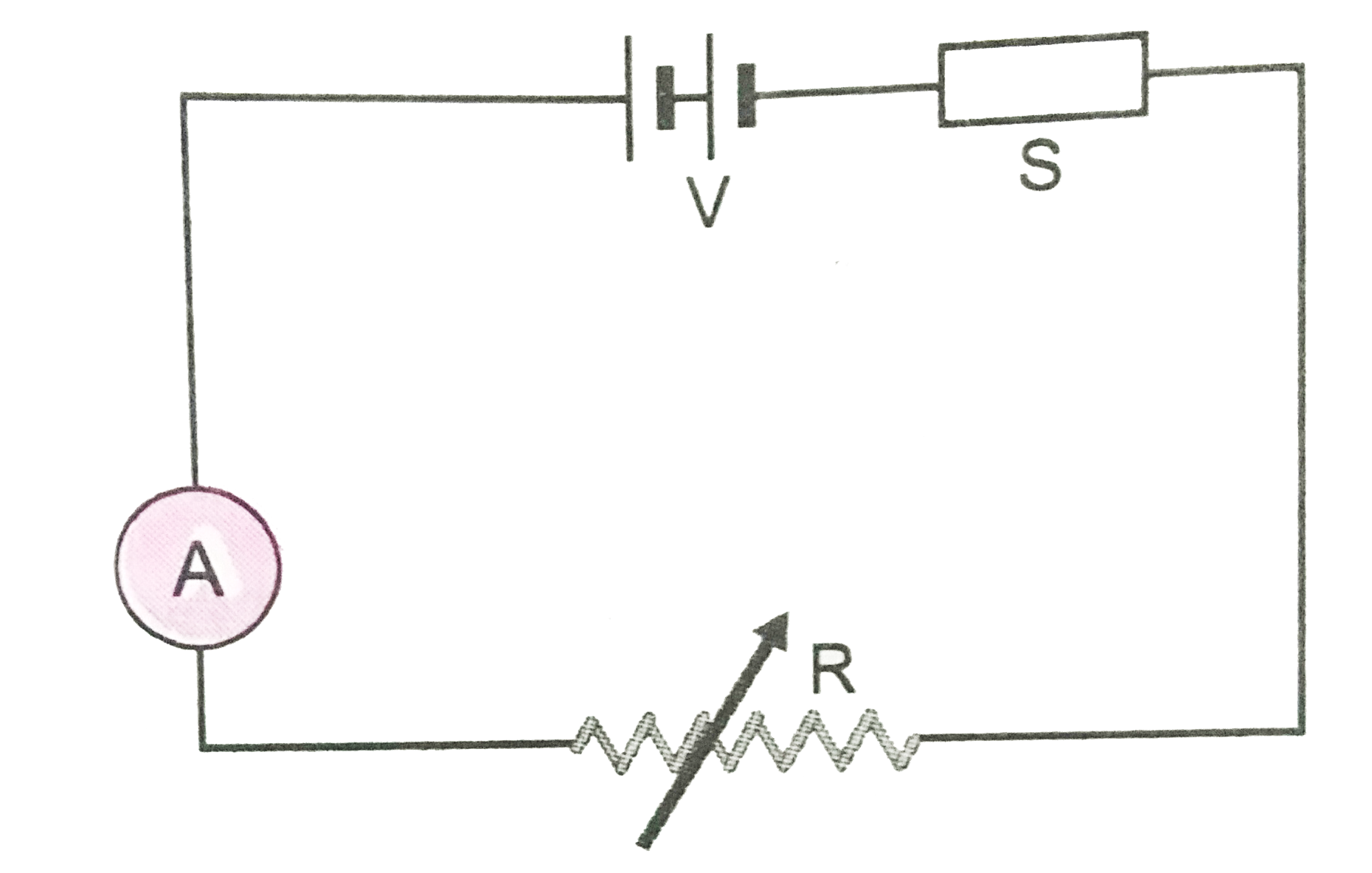
Value of R should be increased with the increase in temperature of semiconductor as circuit resistance decreases and current tends to increase.
Topper's Solved these Questions
- SEMICONDUCTORSBook:ALLENChapter:SEMICONDUCTORSExercise:Part-3(Exercise-1)
Explore 84 Videos
- SEMICONDUCTORSBook:ALLENChapter:SEMICONDUCTORSExercise:Part-3(Exercise-2)
Explore 49 Videos
- PHYSICAL WORLD, UNITS AND DIMENSIONS & ERRORS IN MEASUREMENT Book:ALLENChapter:PHYSICAL WORLD, UNITS AND DIMENSIONS & ERRORS IN MEASUREMENT Exercise:EXERCISE-IV
Explore 8 Videos
- WAVES AND OSCILLATIONSBook:ALLENChapter:WAVES AND OSCILLATIONSExercise:Part-1(Exercise-05)[B]
Explore 42 Videos
Similar Questions
(a) In the following diagram 'S' is a semiconductor . Would
you increase or decrease the value of R to keep the
reading of the ammeter A constant when S is heated ?
Given reason for you answer .
(b) Draw the circuit diagram of photodiode and explain
its working . Draw its I-V characteristics.
View Solution(a) In the given 'S' is a semiconductor. Would you increase or decrease the value of R to keep the reading of the ammeter A constant when S is heated ? Give reason for your answer.
(b) Draw the circuit diagram of a photodiode and explain its working. Draw its 1-V characteristics.
View Solution
Knowledge Check
Figure shows a piece of semiconductor (pure one) S in series with a variable resistor R and a source of constant voltage V.S is heated and the current is kept constant by adjustment R. Which of the following factors will decrease during this process?
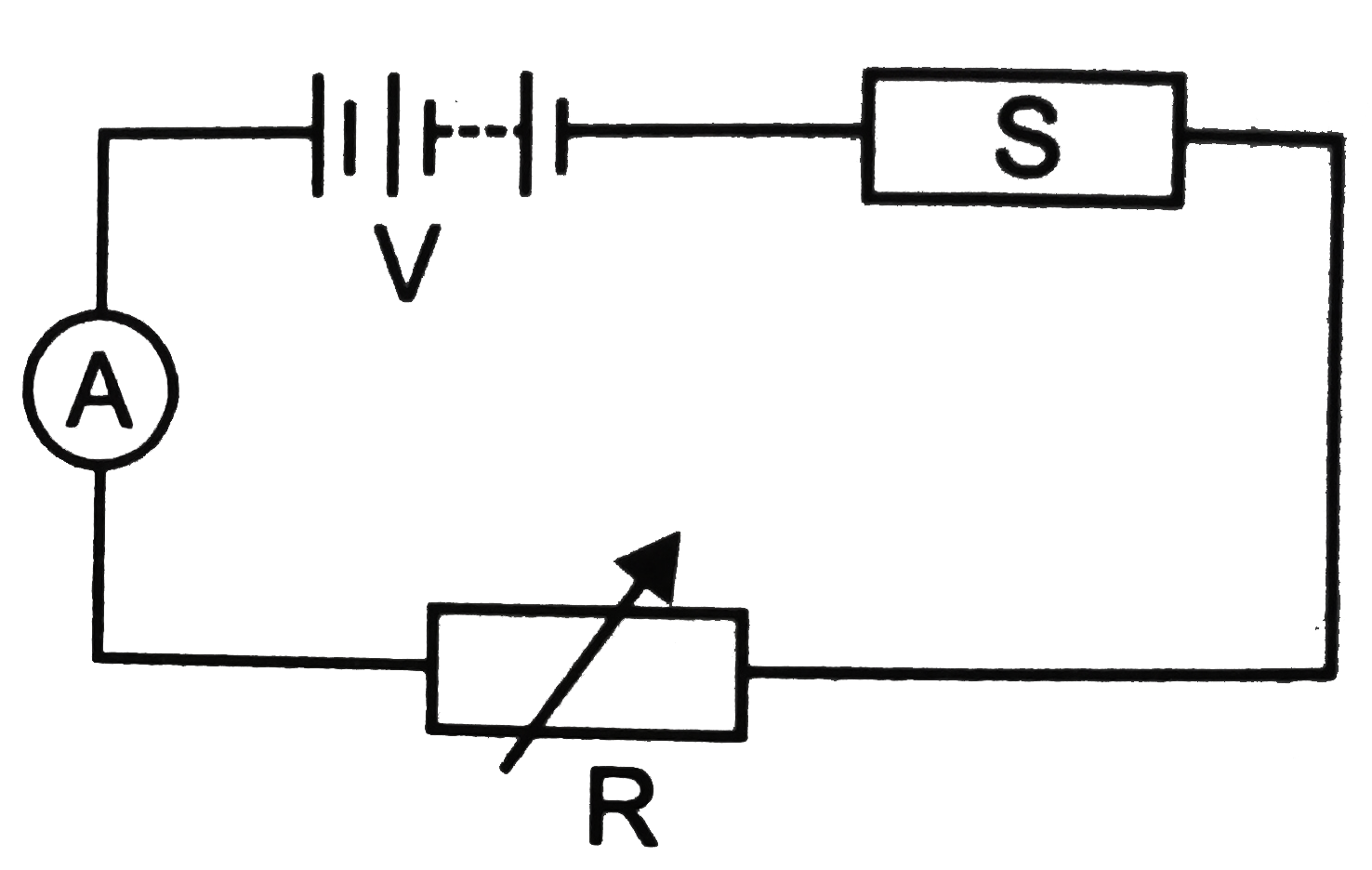
(1) The drift velocity of the conduction electrons in S.
(2) The DC resistance of S
(3) The number of conduction electrons in S. which of the following is correct?Aonly 1B1 and 2C1,2 and 3Donly 3The time constant of an inductor is τ1. When a pure resistor of RΩ is connected in series with it, the time constant is found to decrease to τ2. The internal resistance of the inductor is
ARτ2τ1−τ2BRτ1τ1−τ2CR(τ1−τ2)τ1DR(τ1−τ2)τ2In an electric iron heat producedm is same, whether it is connected across an A.c. source or across 50 V constant voltage. R.M.S. value of the A.C. voltage applied is
A50 VBZeroC50√2VD50√2V
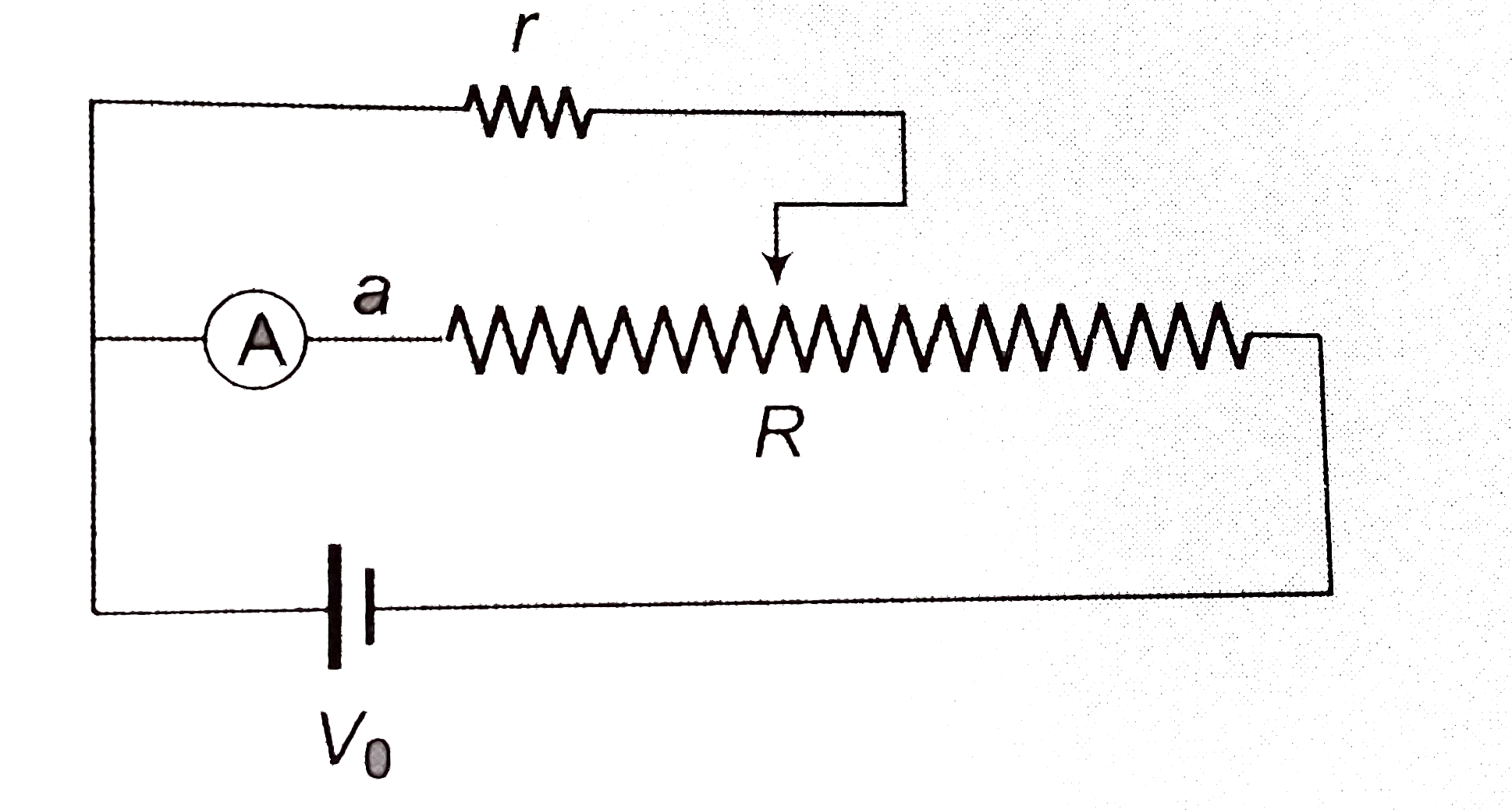
A constant voltage V0 is applied to a potentiometer of resistance R connected to an ammeter. A constant resistor r is connected to the sliding contact of the potentiometer and the fixed end of the potentiometer. How will the reading of ammeter vary as the sliding contact is moved from one end of the potentiometer to the other ? The resistance of ammeter is assumed to be negligible.
View SolutionIn the circuit shown, R=2ΩandV=20 volt. With switch S open the reading of ammeter is half its reading when ‘S’ is closed. Calculate the resistance of the ammeter.
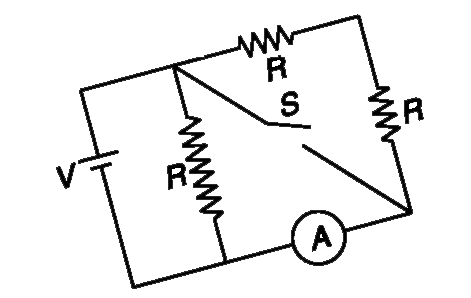
View SolutionIn an AC circuit as shown in the figure, the source is of r.m.s voltage 200 V and variable frequency. At resonance, the circuit
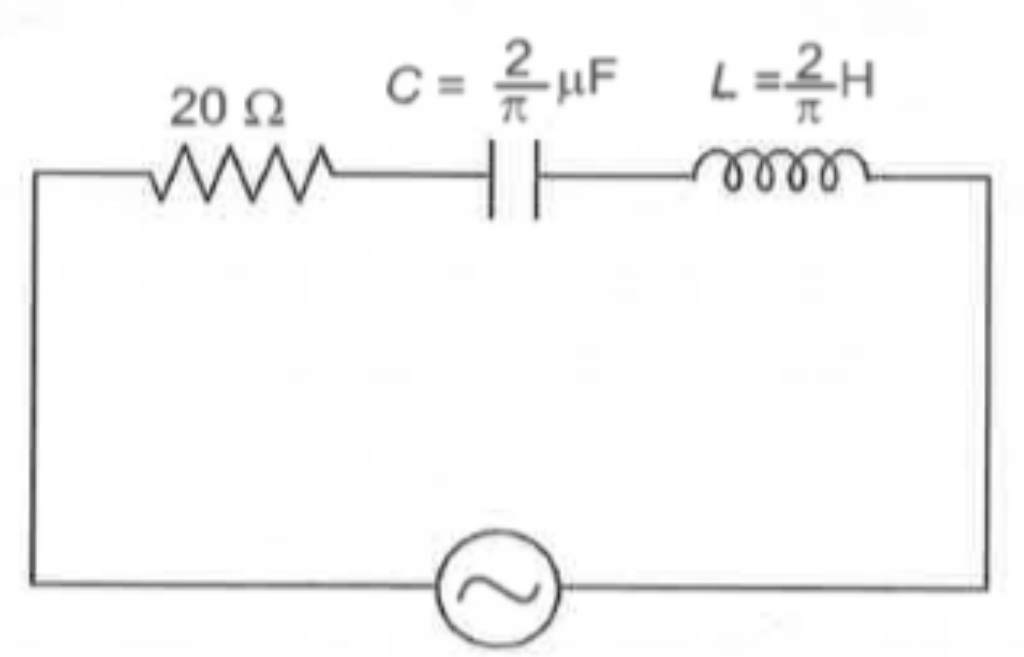
View SolutionThe cirucit shown in fig. extends to the right into infinity. Each battery has the electromotive force V(unknown) and the internal resistance r(known). Each resistor has the resistance 4r. The reading of the idal ammeter shown in the diagram is I. Find the value of V in terms of I and r.

View SolutionThe diagram shows a capacitor C and a resistor R connected in series to an AC source. V1 and V2 are voltmeters and A is ammeter
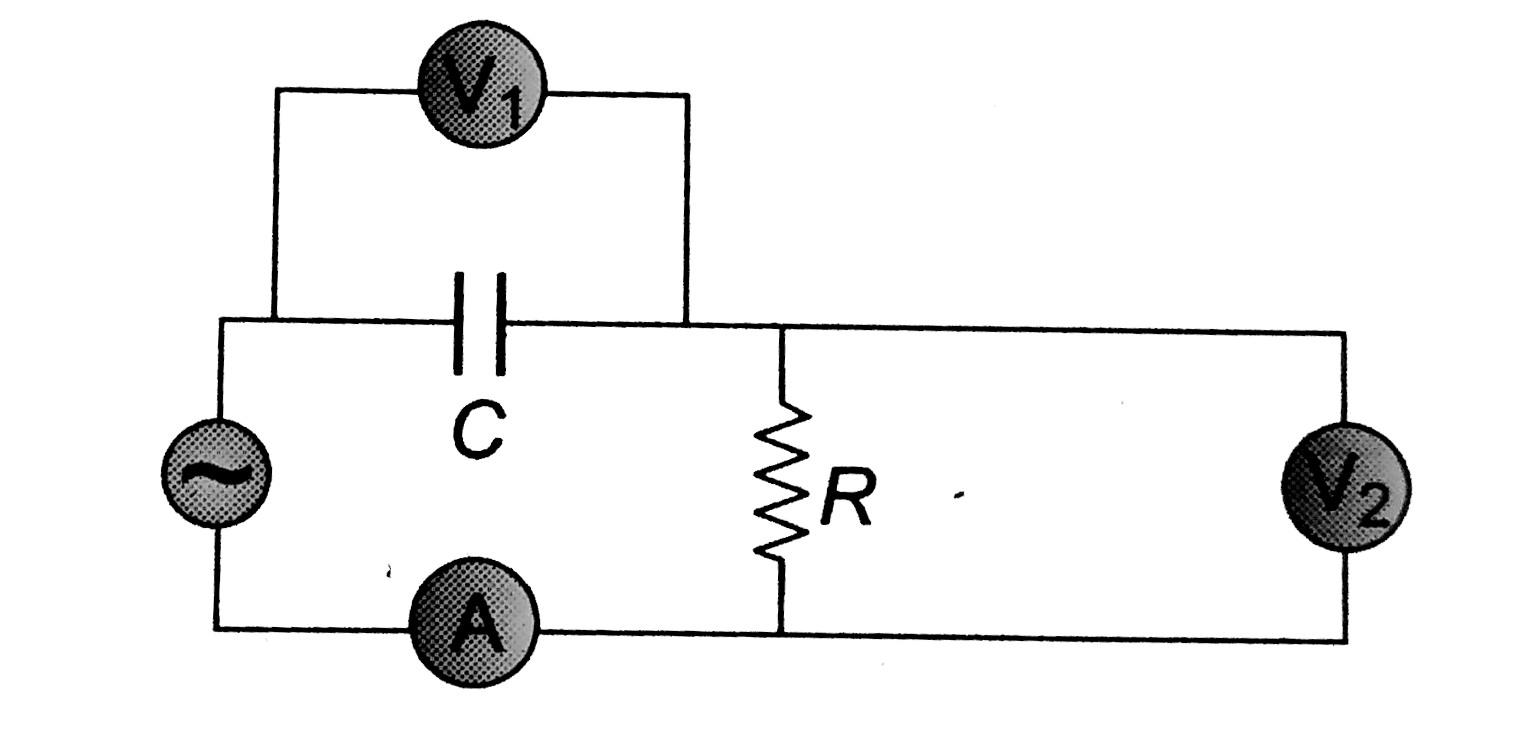
Now, consider the following statements :
(I) Reading in A and V2 are always in phase.
(II) Reading in V1 is ahead in phase with reading in V2,
(III) Reading in A and V1 are always in phase. Which of these statements are/is correct
View Solution